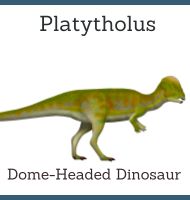In Depth
Xinpusaurus is one of the better known thalattosaurs, and like others it had a laterally compressed tail that was suited to providing underwater locomotion as it hunted for prey like fish. Thalattosaurs still possessed four limbs though, not only betraying their terrestrial ancestry, but also indicating that they probably returned to the shore when they were done hunting.
The upper jaw of Xinpusaurus protruded well beyond the extent of the lower. In X. suni the tip was fairly blunt, but in X. bamaolinensis it was much longer and pointed. This could have been a hunting feature for lashing against the bodies of fish in a furious manner, stunning and injuring the fish so that they are unable to get away. This behaviour would be analogous to how a swordfish hunts today, and the arrangement of the much longer upper jaw is also seen in some ichthyosaurs such as Excalibosaurus and Eurhinosaurus. This might be more true for X. bamaolinensis which also had pointed teeth that were better able for holding onto prey like fish, while the teeth of X. suni are blunter and slightly more robust, possibly indicating a different prey specialisation.
A 2013 study of Xinpusaurus by Liu however has proposed that all three species are actually synonymous with each other, and if true that would mean that only the type species, X. suni, is valid. Also in 2013, the description of a new and large thalattosaur genus called Concavispina found that to be the current closest known relative of Xinpusaurus.
Further Reading
- A preliminary study on the early Late Triassic marine reptiles from Gunanling, Guizhou, China., G. Z. Yin, X. G. Zhou, Z. T. Cao, Y. Y. Yu & Y. M. Luo - 2000. - Postcranial skeleton of Xinpusaurus, J. Liu - 2001. - A new species of Triassic Thalattosauria from Guanling, Guizhou, L. Cheng - 2003. - A new species of Xinpusaurus (Thalattosauria) from the Upper Triassic of China, D. A. Jiang, M. W. Maisch, S. L. Sun, A. T. Matzke & W. C. Hao - 2004. - On Xinpusaurus (Reptilia: Thalattosauria), O. Rieppel & J. Liu - 2006. - On the taxonomy of Xinpusaurus (Reptilia: Thalattosauria), J. Liu - 2013. – A new species of Xinpusaurus (Reptilia, Thalattosauria) from the Ladinian (Middle Triassic) of Xingyi, Guizhou, southwestern China. – Journal of Vertebrate Paleontology. 36 (6). – Z-G. Li, D-Y Jiang, O. Rieppel, R. Motani, A. Tintori, Z-Y Sun & C. Ji – 2016.










